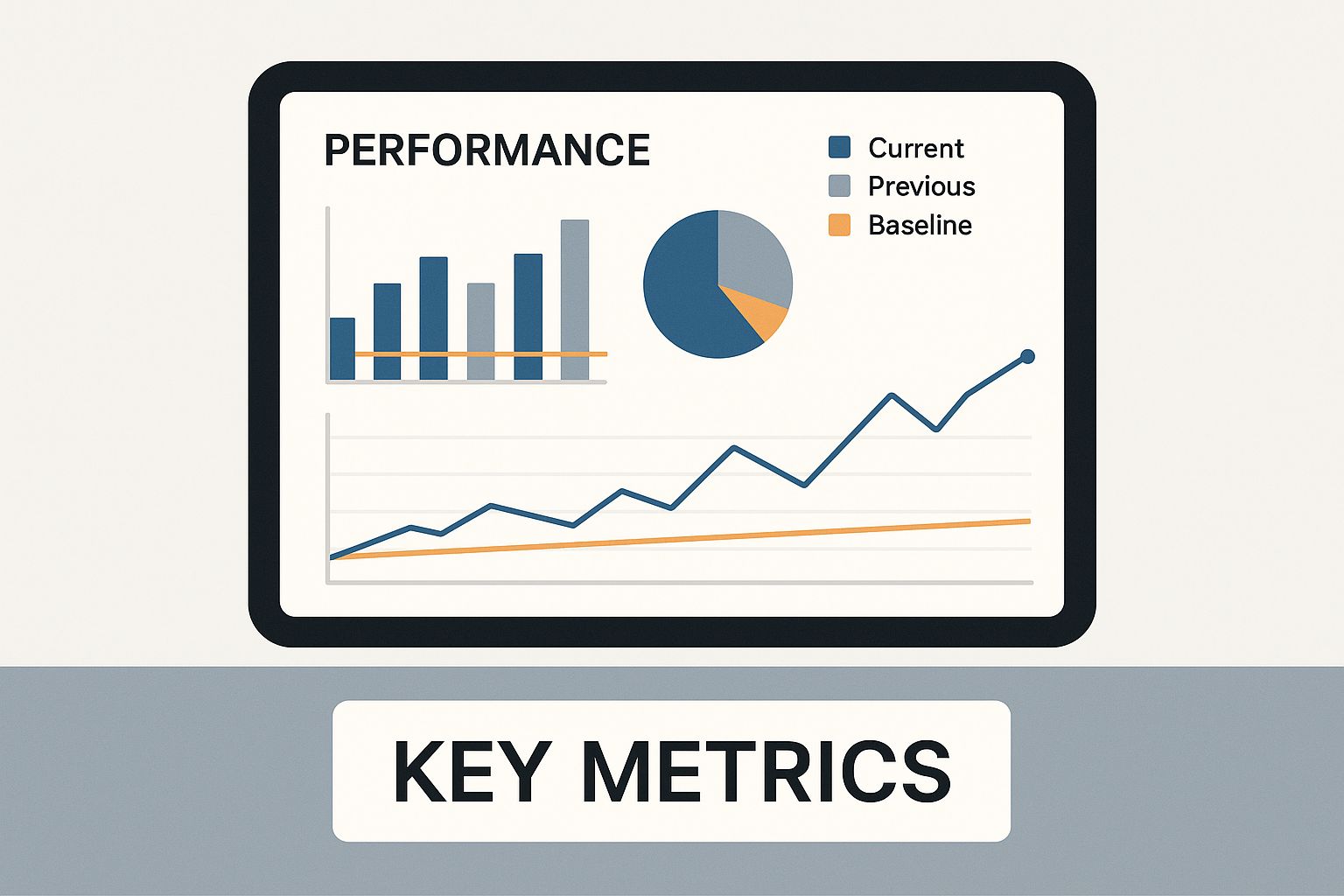The Real Cost of Affiliate Fraud: Beyond Lost Dollars

Affiliate fraud is a widespread problem in affiliate marketing, and its impact goes far beyond immediate financial losses. While the direct costs are substantial, the damage to brand reputation and affiliate relationships can have long-term negative consequences. Therefore, detecting and addressing affiliate fraud effectively is essential for maintaining a healthy and profitable affiliate program.
The Financial Fallout: More Than Just Lost Commissions
The most apparent cost of affiliate fraud is the direct financial loss. This includes wasted advertising spending, commissions paid to fraudulent affiliates, and the cost of chargebacks and refunds resulting from fraudulent transactions. For example, if someone generates fake leads through click fraud, you are paying for clicks that never result in actual customers.
Fraudulent sales also frequently lead to chargebacks, further reducing your profits. This can quickly decrease your return on investment (ROI) and undermine the profitability of your affiliate program.
Affiliate fraud significantly impacts the industry as a whole. It has become a major concern for marketers worldwide, with fraudulent clicks representing a substantial portion of affiliate traffic. In 2022, reports indicated that fraudulent clicks constituted 17% of all affiliate traffic, resulting in approximately $3.4 billion in losses. This highlights the need for robust fraud detection systems within the industry. For more detailed statistics, see: Learn more about affiliate marketing statistics.
Damaged Reputation: Erosion of Trust
Beyond the financial ramifications, affiliate fraud can severely damage your brand's reputation. When customers encounter fraudulent transactions or receive spam from unethical affiliates, their trust in your brand erodes. This can result in negative reviews, reduced customer loyalty, and ultimately, lost revenue.
Strained Affiliate Relationships: The Hidden Cost
Another significant consequence of affiliate fraud is the damage it causes to relationships with legitimate affiliate partners. When fraudulent affiliates manipulate the system and unfairly earn commissions, it reduces the rewards available for honest affiliates.
This can lead to frustration, distrust, and potentially, the loss of your most valuable partners. If your top-performing affiliates see their earnings decline due to fraudulent activity, they might become less motivated to promote your products or even leave your program entirely. Rebuilding this trust can be challenging.
Protecting Your Program: Proactive Affiliate Fraud Detection
Investing in robust affiliate fraud detection measures is crucial for the long-term health of your business. By detecting and addressing fraud promptly, you can minimize financial losses, safeguard your brand's reputation, and cultivate strong relationships with your legitimate affiliate partners. This proactive approach creates a sustainable and thriving affiliate program that benefits everyone involved.
Red Flags That Scream Fraud: What Top Programs Monitor
Affiliate fraud detection is crucial for a successful affiliate program. Knowing what to look for protects your brand and your revenue. Understanding the red flags of fraudulent activity is the first step. For example, unusually high conversion rates can be a significant warning. While high conversions are good, rates far exceeding industry averages often signal manipulation. This could point to click fraud or cookie stuffing.
Suspicious Traffic Patterns: Unmasking the Bots
Unusual traffic patterns are another key indicator. Sudden traffic spikes from unfamiliar or high-risk locations should raise a red flag. This often indicates bot traffic or the use of proxy servers and VPNs. High click volumes with low conversion rates can also suggest click farms or bots generating fraudulent clicks.
Impossible Click-to-Conversion Ratios: Defying the Math
Click-to-conversion ratios that seem statistically impossible strongly suggest affiliate fraud. For example, a consistent 100% conversion rate for an affiliate is unlikely to be legitimate. Such cases require further investigation. Rapid-fire transactions from the same IP address or affiliate account also indicate automated purchasing bots. Use affiliate tracking software to help identify these red flags.
Behavioral Patterns: Spotting the Fraudster’s Tell
Identifying behavioral patterns is also critical. Fraudsters often have recognizable behaviors. They might create multiple accounts with similar information or use stolen credit cards. While sometimes subtle, careful monitoring and analysis can reveal these patterns. Fraud is a major concern in affiliate marketing. Approximately 67% of marketers consider fraudulent activities like fake leads and bot traffic major challenges. These activities waste budgets and damage program credibility. You can learn more about these challenges from sources like Hostinger, which offers valuable affiliate marketing statistics. Automating your affiliate programs can also help; resources like this guide on automated affiliate programs can provide useful insights. Investing in robust fraud detection is essential for maintaining the integrity and profitability of affiliate marketing.
Technology That Catches What Humans Miss

The fight against affiliate fraud is a constant challenge. Fraudsters continually develop new and complex tactics, requiring businesses to adopt advanced detection methods. Using technology is no longer optional; it's crucial for staying competitive. Fortunately, new solutions are emerging that offer powerful capabilities in affiliate fraud detection.
Machine Learning: Identifying Hidden Patterns
Machine learning is a vital tool in the fight against fraud. These algorithms analyze large sets of affiliate activity data, looking for subtle patterns that suggest fraudulent behavior. For instance, they can spot unusual activity in click-through rates, conversion times, and geographic locations that human analysts might miss. This helps businesses proactively identify and stop potential fraud before significant losses occur.
Predictive AI: Anticipating Future Attacks
Predictive AI goes beyond simply recognizing existing patterns. These systems learn from past fraud attempts and apply this knowledge to predict future attacks. They adapt and improve detection capabilities as new fraud methods appear. This proactive approach helps businesses stay ahead of fraudsters, even as tactics evolve. Effective detection often relies on carefully watching API interactions to find anomalies. You can find additional information about this process at API Monitoring.
Fingerprinting and Behavioral Analytics: Exposing Fraudulent Activity
Device fingerprinting and behavioral analytics are other valuable technologies. Fingerprinting tracks suspicious devices across different networks, even when they attempt to hide their identity using VPNs or proxy servers. Behavioral analytics identifies the difference between real human interactions and automated activity created by bots or scripts. Together, these technologies offer a more complete view of affiliate activity, revealing even the most disguised fraud attempts.
Integrated Platforms: Streamlining Fraud Detection
Many businesses are turning to integrated platforms for the most efficient fraud detection. These platforms combine several detection technologies into a single system. This simplifies the process and provides more comprehensive analysis and reporting.
To help you understand the differences between various fraud detection technologies, we've put together a comparison table. It outlines the strengths, weaknesses, and best use cases for each.
Comparison of Affiliate Fraud Detection Technologies
| Technology | Detection Capabilities | Implementation Complexity | Cost Range | Best For |
|---|---|---|---|---|
| Rule-Based Systems | Detects known fraud patterns based on predefined rules | Low | Low to Medium | Businesses with limited resources or basic fraud detection needs |
| Machine Learning | Identifies complex fraud patterns and anomalies in large datasets | Medium | Medium to High | Businesses with high volumes of affiliate activity and sophisticated fraud detection needs |
| Predictive AI | Anticipates future fraud attempts based on past data and emerging trends | High | High | Businesses requiring proactive fraud prevention and advanced analytics |
| Device Fingerprinting | Tracks suspicious devices across networks, even with VPNs or proxies | Medium | Medium | Businesses concerned with identifying repeat offenders and sophisticated fraudsters |
| Behavioral Analytics | Distinguishes between human and bot activity, identifying automated fraud | Medium | Medium | Businesses dealing with click fraud, bot traffic, and other automated fraud attempts |
This table shows that different technologies offer different benefits. While rule-based systems are simple to implement, they're less effective against evolving fraud. Machine learning and predictive AI provide more advanced detection, but require more resources. Choosing the right technology depends on individual business needs and resources.
Fraud detection is an increasingly important area, especially with the rise in digital fraud. Losses recently surpassed $47.8 billion globally, a 15% increase. For more statistics and details, see Find more detailed statistics here. The following data chart demonstrates the effectiveness of various detection technologies.
Fraud Detection Technology Effectiveness (Hypothetical Data)
| Technology | Fraud Detection Rate | False Positive Rate |
|---|---|---|
| Rule-Based Systems | 60% | 10% |
| Machine Learning | 85% | 5% |
| Predictive AI | 92% | 3% |
This chart compares the fraud detection rates and false positive rates of different technologies. As technology advances, detection rates improve, and false positives decrease. Predictive AI has the highest detection rate (92%) and the lowest false positive rate (3%), making it a highly effective approach. The increasing use of AI in affiliate marketing has great potential for improving fraud detection, creating a more secure environment for businesses.
Building Your Fraud Defense System
Technology plays a vital role in detecting affiliate fraud, but it's not the only solution. A truly effective approach requires a robust and well-rounded strategy. Successful affiliate managers recognize this, building multi-layered defense systems that make their programs far less attractive to fraudsters. Let's explore how you can build your own robust defense system.
Establishing Clear Program Policies
The foundation of any effective fraud prevention system lies in clear and concise program policies. These policies should explicitly define acceptable and prohibited behaviors, setting the ground rules for all affiliates. For instance, explicitly outline rules against cookie stuffing, click fraud, and the use of misleading advertising. At the same time, provide your legitimate affiliates with clear guidelines and resources. This fosters a partnership approach, encouraging shared responsibility for maintaining program integrity.
Implementing Effective Vetting Procedures
Implementing robust vetting procedures is another crucial step. Filtering out bad actors before they enter your program can save you considerable time and resources down the line. This might involve reviewing affiliate applications, scrutinizing their websites, and verifying contact information. Thorough vetting helps build a solid foundation for a trustworthy affiliate network. For further information on streamlining this process, consider exploring resources on automating affiliate programs: How to master automated affiliate programs.
Structuring Payments to Discourage Fraud
Consider how your payment structure itself can deter fraudulent activity. Tools leveraging Predictive Analytics can be a valuable asset. For example, tiered commission structures, where higher payouts are linked to genuine performance, incentivize legitimate promotional efforts. Delaying initial commission payments can also discourage fraudsters looking for quick profits. This approach rewards long-term engagement and deters fraudulent activities aimed at short-term gains.
Developing Internal Monitoring Protocols
Finally, establish internal monitoring protocols with clearly defined team responsibilities. This fosters a culture of vigilance within your organization. Regularly review key performance indicators (KPIs) such as conversion rates, click-through rates, and traffic sources. Set clear thresholds for suspicious activity, enabling prompt investigation and action when necessary. A robust affiliate fraud detection system is essential for maintaining a healthy and profitable program. This proactive approach protects your revenue, strengthens your brand reputation, and builds trust with your valued affiliate partners.
Catching Fraud in Real-Time: Monitoring That Works

When it comes to affiliate fraud detection, timing is everything. Discovering suspicious activity weeks later during payment reconciliation can be costly. Instead, successful affiliate programs implement real-time monitoring systems to catch fraud as it happens. This proactive approach minimizes financial damage and helps maintain strong affiliate relationships.
Metrics That Matter: Knowing What to Watch
Real-time monitoring depends on identifying the right Key Performance Indicators (KPIs). It's essential to understand what constitutes normal activity versus a warning sign. For example, a sudden surge in conversions from a single affiliate, especially when combined with a low average order value, could point to click fraud.
A significant increase in traffic from a specific geographic location that doesn't align with your typical customer base might indicate the use of bots or proxy servers. You can learn more about tracking referrals with resources like this article: How to track referrals.
Setting Thresholds: Triggering Timely Alerts
Establishing meaningful thresholds for your chosen KPIs is crucial. These thresholds act as triggers, alerting you when activity deviates significantly from the established norm. This allows your team to investigate potential fraud immediately.
For example, you could set an alert for any affiliate whose conversion rate suddenly increases by 20% or more. However, it’s important to find the right balance. Setting thresholds too low will lead to numerous false positives, which can desensitize your team.
Investigation Protocols: Validating Concerns Quickly
When an alert is triggered, a clear investigation protocol should be in place. This protocol should outline the steps your team needs to take to quickly and efficiently validate concerns without unjustly accusing legitimate partners. This might involve analyzing traffic sources, reviewing transaction details, or contacting the affiliate for clarification.
To help illustrate the key metrics to monitor, the following table provides a useful overview. It outlines critical performance indicators and their typical ranges, along with warning signs and suggested investigation priorities.
Key Fraud Detection Metrics to Monitor
| Metric | Normal Range | Warning Signs | Investigation Priority |
|---|---|---|---|
| Conversion Rate | Varies by industry and offer | Sudden spikes or drops | High |
| Click-Through Rate (CTR) | Varies by campaign and traffic source | Unusually high CTR, especially from unfamiliar sources | Medium |
| Average Order Value (AOV) | Established baseline for your business | Significant deviations from the baseline | Medium |
| Geographic Location | Typical customer demographics | Traffic from unexpected or high-risk locations | Medium |
| New vs. Returning Customers | Typical ratio for your business | Dramatic shifts in the ratio | Low |
By monitoring these metrics, you can gain valuable insights into potential fraudulent activity and prioritize investigations accordingly.
Documentation and Containment: Preserving Evidence, Minimizing Damage
Thorough documentation is essential throughout the investigation process. Preserving evidence, such as IP addresses, timestamps, and transaction IDs, is critical if fraud is confirmed. Having a containment strategy ready can also limit potential financial losses. This might include temporarily suspending the affiliate's account or blocking specific traffic sources.
Building Response Playbooks: Preparing for Different Scenarios
Developing response playbooks for various fraud scenarios is a best practice. These playbooks provide your team with predetermined actions to take, ensuring a consistent and measured response. For example, a playbook for click fraud could outline procedures for identifying the fraudulent clicks, calculating the financial impact, and communicating with the affected affiliate. By proactively monitoring key metrics and implementing robust investigation protocols, you can effectively protect your affiliate program from fraud and ensure its continued success.
Fraud Detection In Action: Success Stories That Teach
Real-world examples of successful affiliate fraud detection offer valuable lessons. These case studies showcase the different tactics used to uncover and address fraud, providing practical frameworks you can adapt to your own situation.
Case Study 1: Unmasking Click Injection in E-Commerce
A major e-commerce retailer noticed a strange pattern: a particular affiliate consistently reported an unusually high conversion rate, significantly exceeding the average. Initially, this seemed like a top-performing partner. However, a closer look using their affiliate fraud detection software revealed a complex click injection scheme. The affiliate was injecting clicks just before legitimate purchases, falsely taking credit for sales they didn't generate.
The investigation found the affiliate had created a mobile app that detected when users were about to buy something on the retailer's website. The app then injected a click, making it appear the purchase originated from the affiliate's link.
The retailer acted quickly, terminating the affiliate's account and implementing stricter monitoring for mobile app attributions. This experience emphasized the importance of carefully examining even seemingly high-performing affiliates and having robust mobile tracking. They also updated their program policies to specifically ban click injection and similar fraudulent click generation.
Case Study 2: Neutralizing Fake Leads in a Subscription Service
A subscription-based service saw a sudden surge in leads, seemingly a positive sign. However, the conversion rate from these leads was extremely low. This discrepancy triggered an investigation. The company discovered a network of fake lead generators. These fraudsters were submitting made-up leads, often using automated bots, to collect commissions without driving real customer acquisitions.
The service implemented a multi-faceted approach in response. They introduced stricter lead validation, requiring extra information to confirm the legitimacy of each lead. They also implemented behavioral analysis to differentiate real human interactions from bot activity. These combined measures significantly reduced fraudulent lead submissions and improved the overall quality of their leads. They learned the importance of tracking not just the quantity but the quality of affiliate-generated leads, including metrics like lead-to-customer conversion rates and contact information validity.
Lessons Learned: Building a Stronger Defense
These case studies underscore the importance of vigilance and proactive monitoring in affiliate fraud detection. They highlight the need for a multi-layered approach combining technology and human oversight. They also show how learning from past incidents can improve program policies and strengthen fraud prevention. By studying these successes, businesses can develop strategies to protect their own affiliate programs from evolving fraud tactics.
Ready to take control of your affiliate program and protect it from fraud? Refgrow offers a seamless, embeddable solution to launch, manage, and expand your affiliate network directly within your SaaS product. With automated tracking, detailed analytics, and robust fraud detection, Refgrow helps you build a thriving, secure affiliate program. Start building your fraud-resistant affiliate program today!

